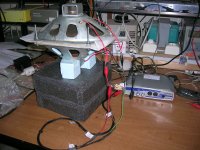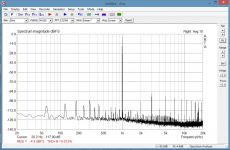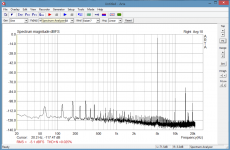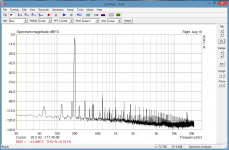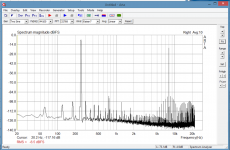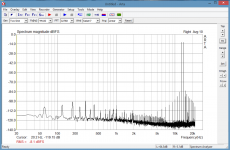@simon7000
Kudos to your aunt, she's a smart woman.
As most general rules, hers is only good for some instances, this will greatly depend on how the hamburger was previously prepped and whether it's peppered up in any way (e.g with finely cut onion, whether it's all beef or pork or some mix of the two, etc). My ancestors have been at it for some centuries, trust it ALL matters. Locally, if you make and sell good hamburgers, you can achieve something of an artist fame.
Kudos to your aunt, she's a smart woman.
As most general rules, hers is only good for some instances, this will greatly depend on how the hamburger was previously prepped and whether it's peppered up in any way (e.g with finely cut onion, whether it's all beef or pork or some mix of the two, etc). My ancestors have been at it for some centuries, trust it ALL matters. Locally, if you make and sell good hamburgers, you can achieve something of an artist fame.
His reasoning is that BT power levels are far lower than mobile phone power levels.So use BT where the transmitter is closer to you head?
Whatever.You can cook salmon in lemon juice, doesn't mean lemons cause cancer!
Dan.
sauce causes headaches
Hitting turps also turns amygdalae into a limbo system.
(reminds me, I should have done a CT/MRI of my own peanut before quitting the Sv bizz)
George,
Did you measure the impedance of a single driver faced with the other being driven with the same signal, in and out of phase? That is most dramatic case of late or outside energy into a transducer causing a dramatic impedance change.
ES
The same signal and amplifier was feeding both drivers in the physical arrangements and electrical connections I described.
I was measuring the impedance of the circuit i.e. of the two drivers.
Configurations IIIa1) and IIIb1) zero out the motional impedance on both drivers due to strong acoustically coupling (see attachment), being out of face acoustically.
Kindly,
The thinking is that when one coil fails the other loudspeaker drives the first as a drone cone, the increase in load causes a soon to follow failure.
For some months, I’ve used this loading configuration -one 12"active, one 12" as ‘drone’- intentionally at home. No problem with the amplifier driving two bass channels. (Now I power both drivers and each one individually, the construction is similar to M&K X Series subs but of opposite acousticall phase with these, losing in efficiency, gaining in control)
Will you folks PLEASE stop misusing the concept of impedance. As Heavyside defined it the term ONLY applies to the sinusoidal steady state. The instantaneous voltage and current might interest you but it has nothing to do with impedance. The concept applies to the response to one input stimulus all other inputs at zero.
Scott
I think you are doing well for warning on the definitions.
In a RLC AC circuit, it’s easy to consider the ‘V/I’ theta angle as being the same entity as the ‘Apparent power/Real power’ theta angle.
I have come to erroneous conclusions myself due to this misunderstanding (and it will happen again)
Really, Heavyside had no clue about complex numbers? I think you're missing something. We're a year or two away from grasping these concepts what a laugh.
He was well aware of complex numbers.
See in his Electromagnetic Theory Volume I, the whole Chapter III (The elements of vectorial algebra and analysis). I quote:
"The laws of vector algebra themselves are established through quaternions, assisted by the imaginary sqrt (-1)"
One has to acquaint himself with the different way of describing the phenomena at that time.
In all the writings of Heaviside, the Vo/Co term (C denotes current) and the expression “apparent resistance” is in abundance but the term “impedance” is rarely seen.
Of all the subject tittles in all the volumes of “Electromagnetic Theory” and “Electromagnetic Papers” there is only one chapter where the word “impedance” is used. And this chapter is very illuminating in terms of conditions and observations:
Electrical Papers Volume II, Part 2 “Effects of Quasi-Resonance. Fluctuation in the impedance”
https://archive.org/search.php?query=creator%3A%22Heaviside%2C+Oliver%2C+1850-1925%22
They believed that the energy radiated by then common VGA monitors were well tuned to have the same effect on parts of human brains.
But they never went so far as to worry about permanent damage.
It’s only the two last months I stopped using my old Sony CRT as a PC monitor (30cm from my face). What’s inside my scalp must have been really ‘well done’ all these years.
George
Scott, you have expressed interest in participating, here it is:
http://www.diyaudio.com/forums/software-tools/287089-getting-numbers-right.html
Attachments
Last edited:
Scott, you have expressed interest in participating, here it is:
http://www.diyaudio.com/forums/software-tools/287089-getting-numbers-right.html
Thank you George.
Historically people were comfortable with different mathematical formalisms but in hindsight some are exact equivalents. There is little to be gained in quibbling over the details.
Euler laid the foundation and Caspar Wessel described the complex plane all long before Heavyside. Sines and cosines are exactly equivalent to the complex exponential description of signals, I prefer the latter.
Hitting turps also turns amygdalae into a limbo system.
Drinking turpentine?
Drinking turpentine?
Where Max comes from it's distilled Fosters.
His reasoning is that BT power levels are far lower than mobile phone power levels.
.
But what are the SARs? inverse square law at play here. Ignoring the fact that mobile phones have agressive power control for capacity and battery life issues and that only an idiot would design a phone antenna that put significant power into the head rather than where it needed to go.
But what are the SARs? inverse square law at play here. Ignoring the fact that mobile phones have agressive power control for capacity and battery life issues and that only an idiot would design a phone antenna that put significant power into the head rather than where it needed to go.
This has been highly studied, https://www.cst.com/Applications/Article/Simulation-Of-Mobile-Phone-Antenna-Performance not sure it looks good for the head in the way.
In the early R&D days you could get some spectacular PA failures with VSWR's up against car bodies, etc.
Last edited:
A few years ago, there was a rash of mobile phones you could buy in Asia which had 1W and 5-10W output levels. I can just imagine what that did to brain cells.
And more recently a chain store in USA sold WiFi extenders of Wattage enough to reach Canada or Mexico.
Both seem to be withdrawn but they exist on the Internet.
http://www.l-com.com/wifi-wlan-cellular-amplifiers-24-ghz-wifi-amplifiers
And the output level varies in 'legal' phones. ----- http://www.ncbi.nlm.nih.gov/pmc/articles/PMC1763677/pdf/v061p00769.pdf
-RNM
And more recently a chain store in USA sold WiFi extenders of Wattage enough to reach Canada or Mexico.
Both seem to be withdrawn but they exist on the Internet.
http://www.l-com.com/wifi-wlan-cellular-amplifiers-24-ghz-wifi-amplifiers
And the output level varies in 'legal' phones. ----- http://www.ncbi.nlm.nih.gov/pmc/articles/PMC1763677/pdf/v061p00769.pdf
-RNM
Last edited:
My friends further recommendation was to if possible lock the phone to the 900MHz band.This has been highly studied, https://www.cst.com/Applications/Article/Simulation-Of-Mobile-Phone-Antenna-Performance not sure it looks good for the head in the way.
Dan.
Last edited:
Trying to catch up on this thread. A few days back there was some interesting talk about amplifier measurements and tests. I don't have a Power Cube, but will present some measurements below.
This is a well built, older model professorial amp that I currently use. It is capable of out putting about 75 volts RMS without clipping. However, I have it turned down so that max out is 32V RMS. No clipping worries, and enough volume.
The average output voltage on the music I listen to is 6-7 volts. The graphs below were done at 7V into an 8 ohm resistive load. Peakshit 32 volts or more.
I have an opinion about the sound of this amp, but won't say what it is, yet. As you can see, distortion is low, but not unmeasurable. And it's mostly odd order harmonics. Any thoughts or opinions about an amp like this?
This is a well built, older model professorial amp that I currently use. It is capable of out putting about 75 volts RMS without clipping. However, I have it turned down so that max out is 32V RMS. No clipping worries, and enough volume.
The average output voltage on the music I listen to is 6-7 volts. The graphs below were done at 7V into an 8 ohm resistive load. Peakshit 32 volts or more.
I have an opinion about the sound of this amp, but won't say what it is, yet. As you can see, distortion is low, but not unmeasurable. And it's mostly odd order harmonics. Any thoughts or opinions about an amp like this?
Attachments
Haha, yes it's in our genes.
Our 'Kultural Attache' - Sir Les Patterson (Barry Humphries)
Barry_Humphries created Bazza McKenzie along with Phillip_Adams.
Both are outstandingly talented men.
Philip Adams hosts a brilliant and informative chat show covering a wealth of subjects, a must listen - 20 years of interviews Late Night Live/past-programs/
Here's some earlier Crocodile Dundee - Getting Fit with Arthur Dunger
Dan.
Last edited:
- Status
- Not open for further replies.
- Home
- Member Areas
- The Lounge
- John Curl's Blowtorch preamplifier part II
